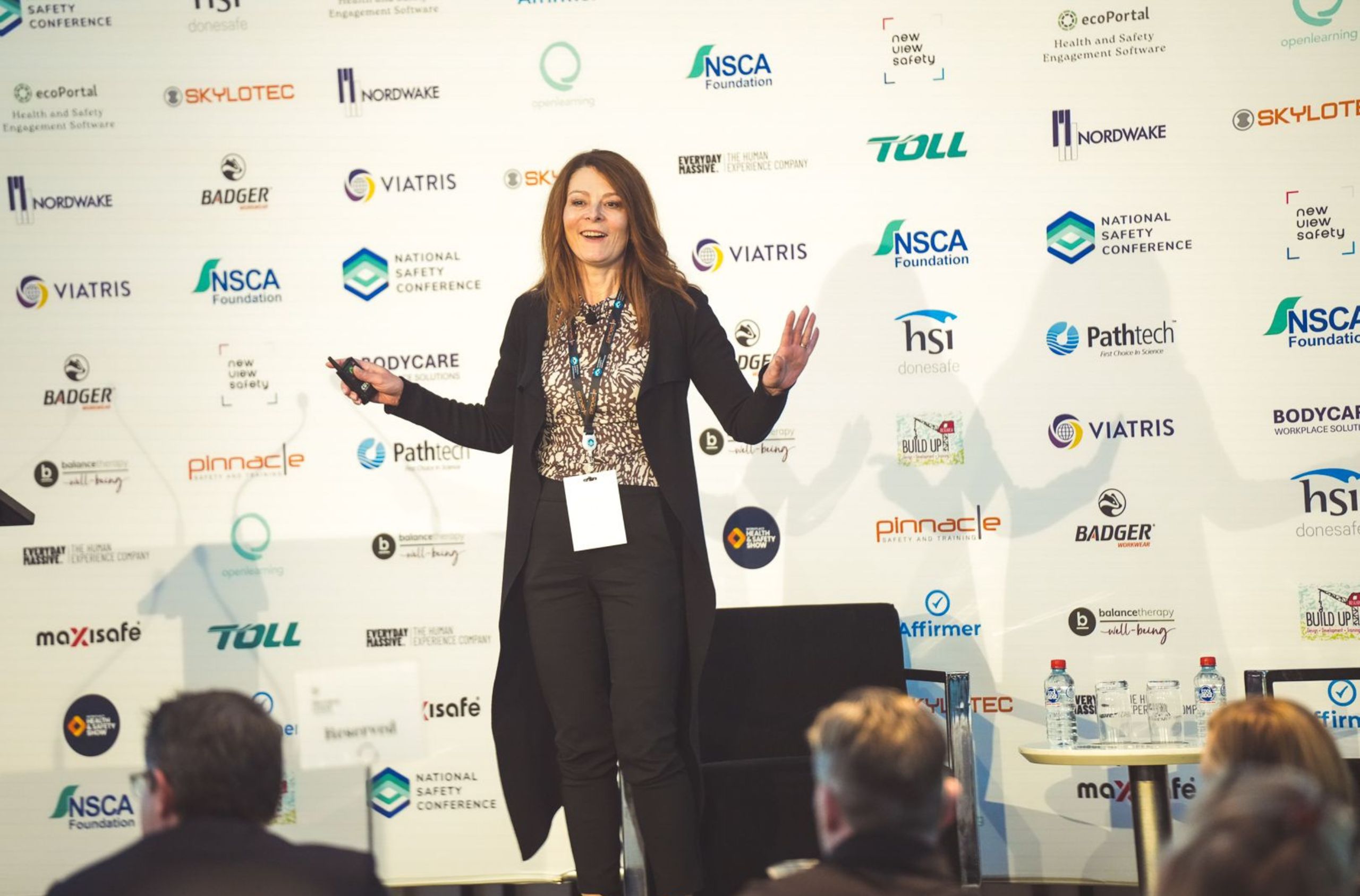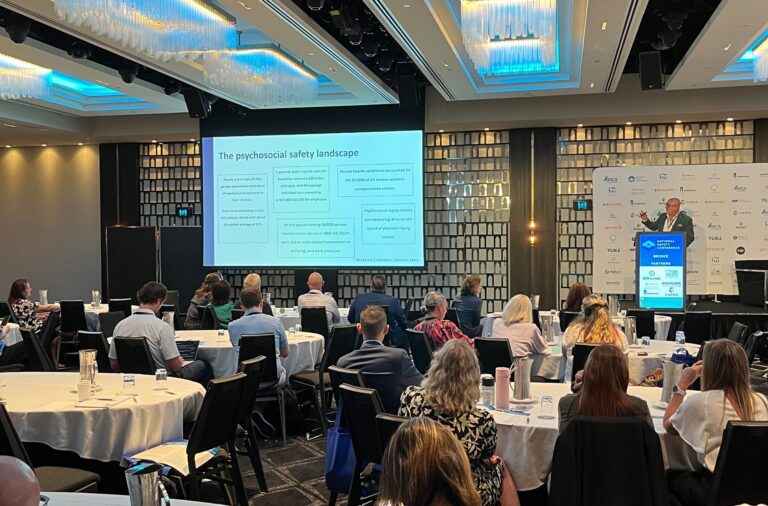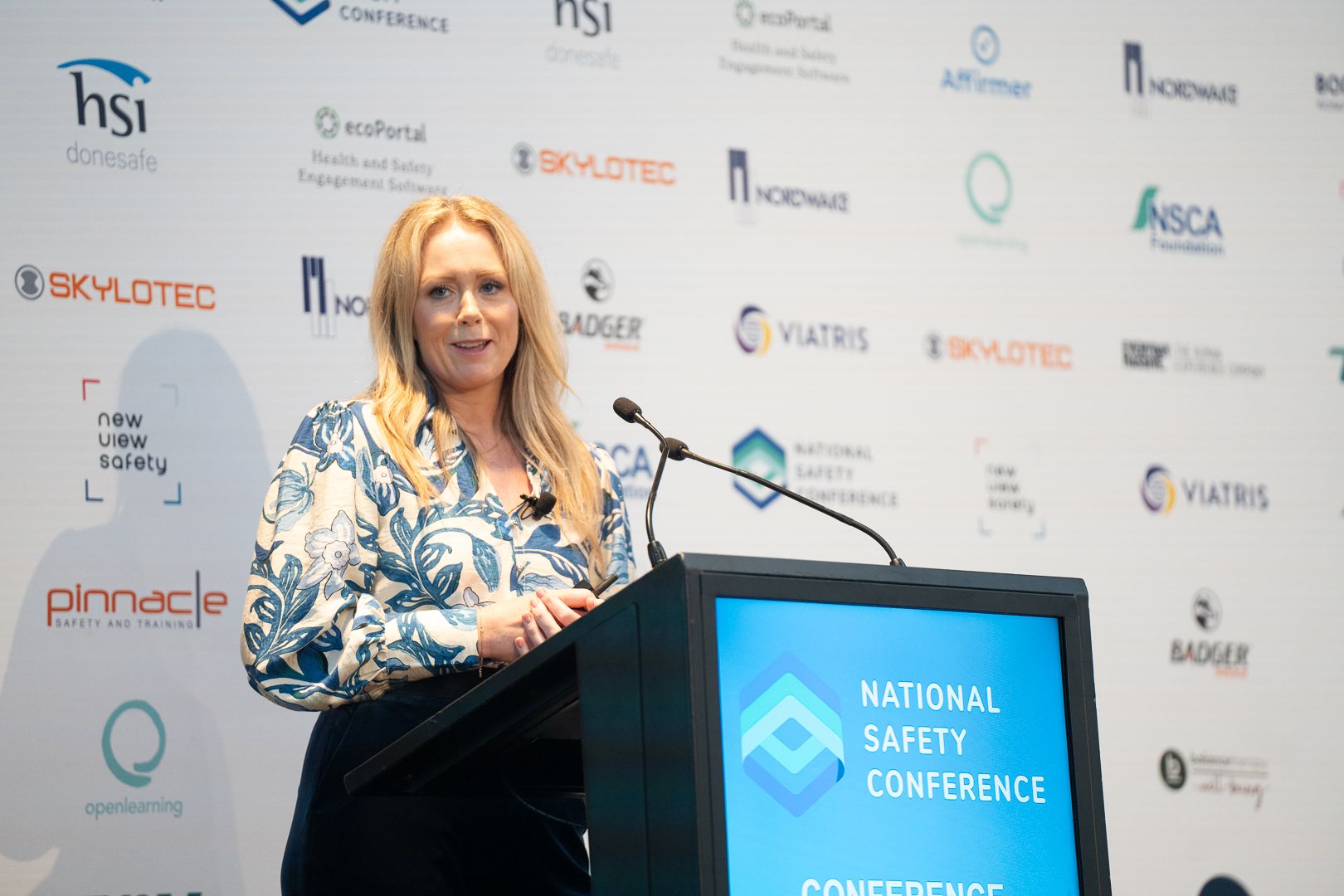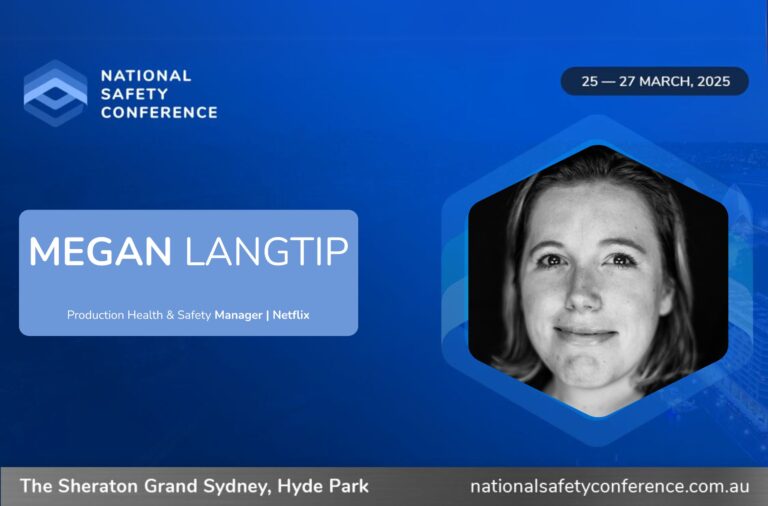
At the 2025 NSCA National Safety Conference in Sydney, Sandra Surace took to the stage to share a practical and research-backed framework for addressing one of the most pressing challenges in modern workplaces: psychosocial risk.
A mental health professional with a Master of Applied Positive Psychology, Sandra works as a Senior Consultant at the Opus Centre for Psychosocial Risk. Her session, titled “Unveiling the Blueprint for Psychosocial Risk”, explored how organisations can move beyond reactive compliance and build healthier, more resilient work environments through balance — specifically, the balance between job demands and job resources.
The Three Layers of Job Demands
Sandra explained that psychosocial risks are rooted not just in the work itself, but in how that work interacts with the individual’s emotional and mental resources.
“There are three types of job demands we all face,” she said. “Task-related demands, environmental demands, and those that are specific to our occupation or industry.”
- Task-Related Demands
These include the mental load of planning, switching tasks, meeting deadlines, and navigating emotionally intense interactions. “This takes a lot of energy,” Sandra explained. “We’re not just doing our job — we’re managing our emotions and often other people’s too.”
- Work Environment Demands
Even small operational changes can be surprisingly disruptive.
“Every tweak to a process, every new policy — it adds up,” she said. “It’s like learning to drive a manual car. At first, every action takes effort and attention.”
- Industry-Specific Demands
Each sector comes with its own stressors.
“Demands aren’t bad in themselves,” Sandra noted. “But when demands are high and resources are low, that’s when psychosocial hazards emerge.”
Building Up Job Resources
To counterbalance these demands, organisations must invest in job resources — the things that protect and support workers psychologically.
Sandra outlined three key areas:
- Job Control: “Autonomy doesn’t mean doing whatever you want,” she said. “It’s about being trusted to decide how you approach your work.”
- Reward and Recognition: Informal thanks and genuine gratitude go a long way. “It’s not always about formal programs. Sometimes it’s just, ‘Thanks for stepping in when I couldn’t juggle it all.’ That matters.”
- Support: “Coworker support becomes a demand when it’s not backed by supervisory support,” she warned. “We need both.”
She also highlighted the importance of recovery.
“Without recovery, we can’t connect to the things we love,” she said. “And that’s where we get our energy and resilience from.”
Leading Indicators vs Lagging Outcomes
A key theme of the session was the need to shift from relying solely on lagging indicators like absenteeism, injury rates, or complaints — and instead, track leading indicators of psychological safety.
“Lag indicators show us what’s already happened,” Sandra explained. “Lead indicators — like senior leadership priority, trust in management, and worker confidence — tell us what’s coming.”
These predictors are especially important in a work landscape that is becoming more cognitively demanding. As routine tasks are replaced by automation and AI, workers are increasingly facing complex, non-routine challenges.
“Demands aren’t necessarily increasing in quantity,” Sandra said, “but they are increasing in complexity.”
A Practical Blueprint: The WorkerSTEAM Model
To help organisations navigate this space, Sandra introduced the Opus Centre’s internationally recognised WorkerSTEAM framework — a six-step model for psychosocial risk management developed in partnership with Comcare:
- Awareness Raising: “You can’t act on what people don’t understand,” she said. Building shared language and literacy around psychosocial risk is critical.
- Risk Assessment: From informal conversations to formal audits, real insight comes from involving workers in assessing what’s actually happening on the ground.
- Action Planning: “It’s not about doing something to people,” she said. “It’s about working with them to design solutions.”
- Consultation: Support continues through the process — not just at the start.
- Implementation: “You need both senior leadership and frontline workers in the room. If you only have one, the change won’t stick.”
- Evaluation: “This is the step most organisations forget,” she warned. “You need to know if your intervention is actually doing what you intended it to do.”
From Blueprint to Impact
Sandra shared the results of a real-world case study involving 22 groups — half receiving the WorkerSTEAM intervention, half as controls. Over time, both groups showed improvement, but the experimental groups showed statistically significant gains across multiple wellbeing and engagement metrics.
“Even those in the control group improved slightly just by sitting near their experimental colleagues,” she noted. “It shows how much culture and conversation matter.”
The lesson? Awareness alone has power. But structured, sustained action backed by data has the ability to transform workplaces from reactive environments into proactive cultures of psychological safety.
About Sandra
Sandra Surace is a passionate mental health professional with a strong background in workplaces and education. She holds a Master of Applied Positive Psychology from the University of Melbourne and has mentored at the Melbourne Graduate School of Education. Currently a Senior Consultant with the Opus Centre—leaders in evidence-based psychosocial risk management—Sandra works to build mentally healthy workplaces. Her past roles include Head of Workplace Mental Health at SuperFriend, and work with Beyond Blue’s Be You team, Early Childhood Australia, and Headspace.
Share:



